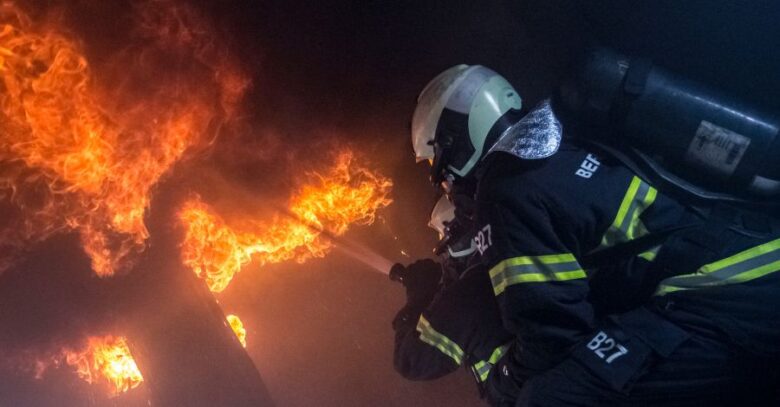Industrial disasters have a profound impact on both human lives and the environment.
While some disasters have gained significant attention and study, there are many lesser-known incidents that hold valuable lessons for risk management and process safety.
This article delves into the anatomy of these lesser-known industrial disasters, exploring their causes, consequences, and the lessons learned.
Understanding Lesser Known Industrial Disasters
While major industrial disasters often dominate headlines, it is important not to overlook the lesser-known incidents that have occurred throughout history. These disasters may not have garnered widespread attention, but they still carry valuable lessons for risk management and process safety.
By studying lesser-known industrial disasters, we can gain a comprehensive understanding of the range of risks and hazards that exist across different industries.
These incidents highlight the need for proactive risk assessment and management practices, as even seemingly minor incidents can have severe consequences.
Analyzing Causes and Contributing Factors
To prevent future disasters, it is crucial to analyze the causes and contributing factors of lesser-known industrial incidents. This involves conducting thorough investigations and identifying the root causes behind each disaster.
Causes and contributing factors can vary widely depending on the industry and specific circumstances of the incident. Common factors may include inadequate training, lack of maintenance, flawed equipment design, organizational deficiencies, or a combination of multiple factors.
Understanding these causes helps to identify areas for improvement and develop targeted risk mitigation strategies.
Examining Case Studies
Examining case studies of lesser-known industrial disasters provides valuable insights into the sequence of events, failures, and impacts. Each case study offers a unique perspective on the challenges and complexities involved in managing risks.
By studying these case studies, industries can gain a deeper understanding of the specific vulnerabilities and failures that led to each incident. This knowledge can inform risk management strategies, shape safety protocols, and contribute to the development of best practices.
Furthermore, case studies highlight the importance of information sharing and collaboration among industries. Lessons learned from one sector can often be applied to others, fostering a cross-industry approach to risk management and encouraging proactive measures to prevent similar incidents.
Learning from Lessons and Recommendations
Learning from lesser-known industrial disasters involves extracting valuable lessons and recommendations to prevent similar incidents in the future. Each disaster presents unique insights into areas that need improvement, such as safety culture, regulatory oversight, emergency response, and communication.
By studying the lessons and recommendations from these incidents, industries can enhance their risk management practices. This may involve implementing stricter safety protocols, providing comprehensive training programs for employees, and improving communication channels to ensure that information is effectively disseminated during critical situations.
Furthermore, sharing the lessons learned from lesser-known disasters can benefit the broader industry community. Collaborative efforts, such as industry conferences, workshops, and knowledge-sharing platforms, provide a valuable space for disseminating these lessons and fostering continuous improvement in risk management practices.
The Role of Risk Assessment and Management
Effective risk assessment and management are fundamental for preventing industrial disasters. Lesser-known incidents highlight the importance of identifying potential hazards, evaluating risks, and implementing appropriate controls.
By conducting thorough risk assessments, industries can identify vulnerabilities and develop mitigation strategies tailored to their specific operations. This may involve implementing engineering controls, establishing safety protocols, and ensuring proper maintenance and inspection procedures.
Risk management should be an ongoing process, with regular audits and reassessments to address changing conditions and emerging risks. By adopting a proactive approach to risk management, industries can minimize the likelihood and severity of accidents, protecting both workers and the surrounding environment.
Mitigation and Preparedness Strategies
Mitigation and preparedness strategies play a crucial role in minimizing the impact of industrial disasters. Lessons from lesser-known incidents emphasize the importance of being prepared for emergencies and having robust mitigation measures in place.
Effective mitigation strategies may include emergency response plans, evacuation procedures, hazard identification systems, and the use of advanced technologies for early detection and intervention. Regular training programs and drills help ensure that employees are prepared to respond appropriately during critical situations.
Preparedness also involves fostering a safety culture within organizations. This includes promoting open communication, encouraging reporting of near-misses and potential hazards, and continuously improving safety practices based on lessons learned.
By integrating mitigation and preparedness strategies into their operations, industries can significantly reduce the potential consequences of industrial disasters. Learning from the experiences of lesser-known incidents provides valuable insights for developing comprehensive and effective mitigation plans.
Industry Collaboration and Knowledge Sharing
Learning from lesser-known industrial disasters involves extracting valuable lessons and recommendations to prevent similar incidents in the future. Each disaster presents unique insights into areas that need improvement, such as safety culture, regulatory oversight, emergency response, and communication.
By studying the lessons and recommendations from these incidents, industries can enhance their risk management practices. This may involve implementing stricter safety protocols, providing comprehensive training programs for employees, and improving communication channels to ensure that information is effectively disseminated during critical situations.
Furthermore, sharing the lessons learned from lesser-known disasters can benefit the broader industry community. Collaborative efforts, such as industry conferences, workshops, and knowledge-sharing platforms, provide a valuable space for disseminating these lessons and fostering continuous improvement in risk management practices.
The Role of Risk Assessment and Management
Effective risk assessment and management are fundamental for preventing industrial disasters. Lesser-known incidents highlight the importance of identifying potential hazards, evaluating risks, and implementing appropriate controls.
By conducting thorough risk assessments, industries can identify vulnerabilities and develop mitigation strategies tailored to their specific operations. This may involve implementing engineering controls, establishing safety protocols, and ensuring proper maintenance and inspection procedures.
Risk management should be an ongoing process, with regular audits and reassessments to address changing conditions and emerging risks. By adopting a proactive approach to risk management, industries can minimize the likelihood and severity of accidents, protecting both workers and the surrounding environment.
Mitigation and Preparedness Strategies
Mitigation and preparedness strategies play a crucial role in minimizing the impact of industrial disasters. Lessons from lesser-known incidents emphasize the importance of being prepared for emergencies and having robust mitigation measures in place.
Effective mitigation strategies may include emergency response plans, evacuation procedures, hazard identification systems, and the use of advanced technologies for early detection and intervention. Regular training programs and drills help ensure that employees are prepared to respond appropriately during critical situations.
Preparedness also involves fostering a safety culture within organizations. This includes promoting open communication, encouraging reporting of near-misses and potential hazards, and continuously improving safety practices based on lessons learned.
By integrating mitigation and preparedness strategies into their operations, industries can significantly reduce the potential consequences of industrial disasters. Learning from the experiences of lesser-known incidents provides valuable insights for developing comprehensive and effective mitigation plans.
Conclusion
While high-profile industrial disasters often dominate public attention, it is equally important to learn from lesser-known incidents.
These disasters hold valuable lessons and insights that can enhance risk management and process safety across industries. By examining the causes, consequences, and lessons learned from these incidents, industries can proactively identify and address potential risks, ultimately striving for safer and more sustainable operations.
It is through continuous learning, collaboration, and a commitment to improving safety practices that we can prevent future catastrophes and protect both lives and the environment.




